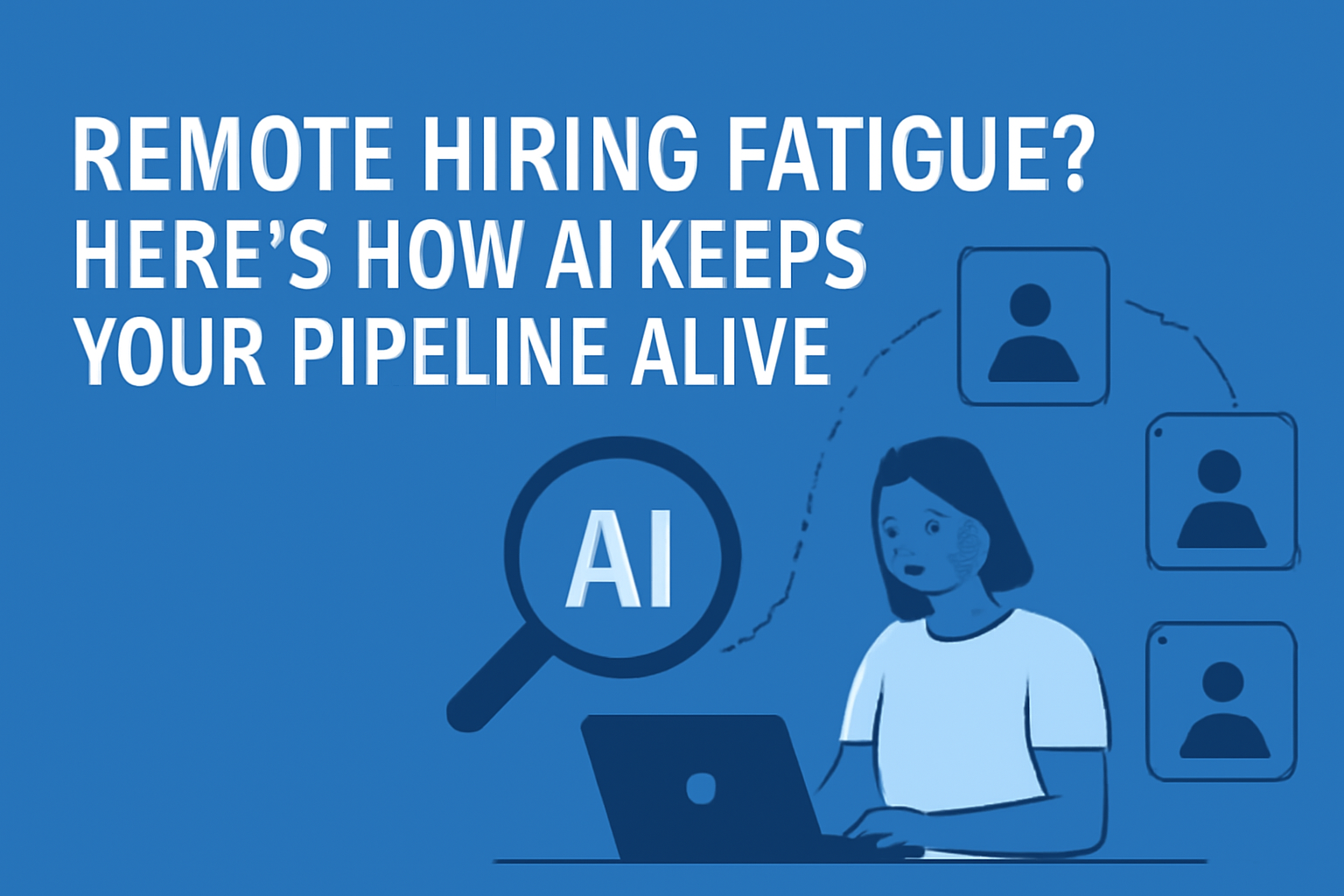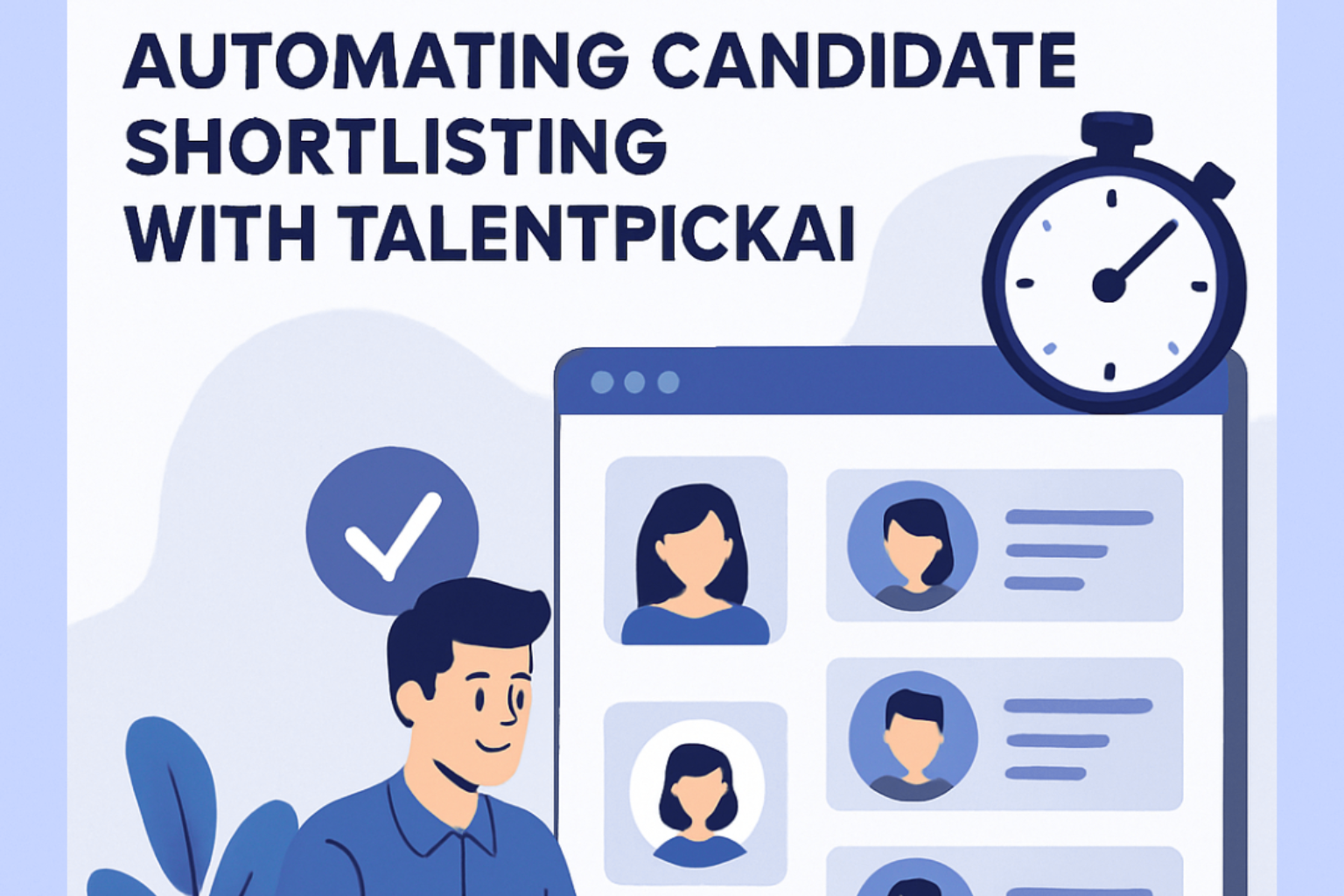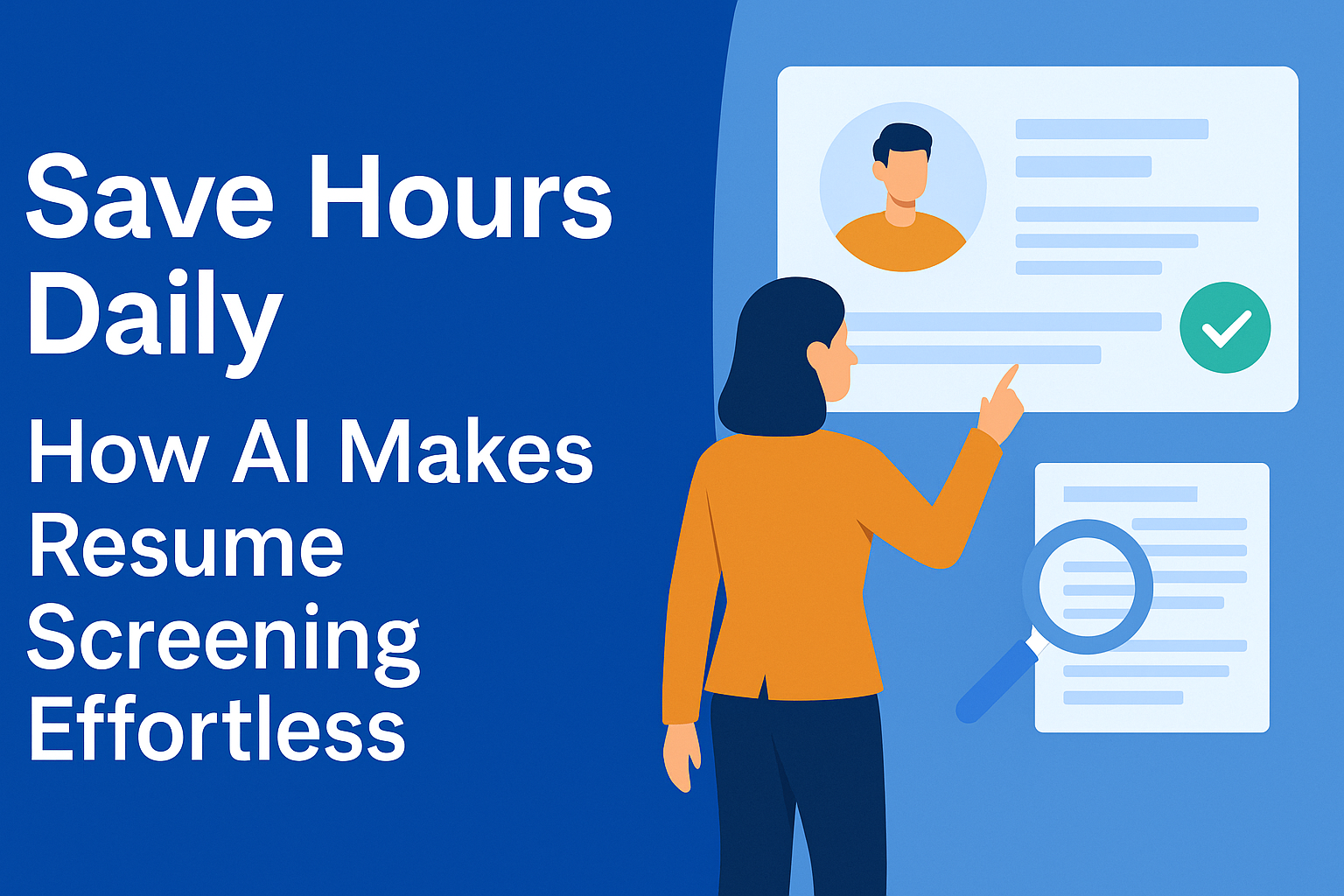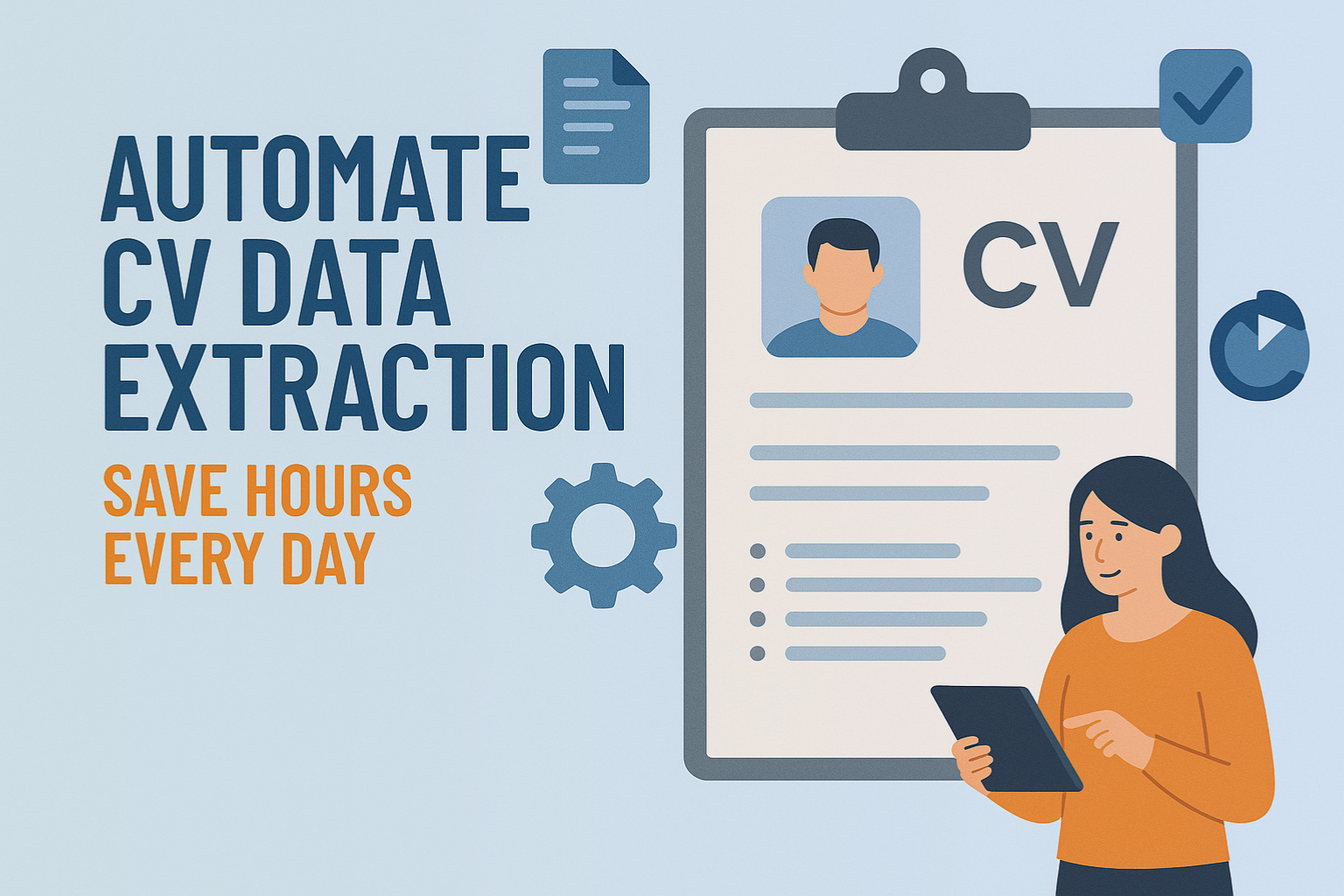
Introduction: The New Reality of Remote Hiring
Since 2020, remote hiring has evolved from an emergency solution into the backbone of modern recruitment strategies. U.S.-based startups and enterprises alike now rely heavily on digital-first hiring. While this opens doors to global talent and diverse skill pools, it has also created a new challenge: remote hiring fatigue. Recruiters and startup founders often find themselves overwhelmed by endless video calls, repetitive candidate screenings, and the constant juggling of multiple hiring platforms.
But here’s the good news—AI is not just a buzzword anymore. With AI recruiting software, AI candidate screening tools, and video interviewing AI platforms, hiring no longer needs to feel like a drain. Instead, AI turns what was once a tedious process into a scalable, data-driven, and candidate-friendly system.
Why Remote Hiring Fatigue Happens
Hiring remotely seems flexible, but the day-to-day execution often reveals cracks. Recruiters and hiring managers commonly face challenges such as:
- Resume Overload: Hundreds of applications arrive for each job posting, with no easy way to separate qualified candidates from noise.
- Endless Video Interviews: Hours spent on video calls with candidates who often turn out to be poor fits.
- Candidate Drop-offs: Slow communication leads to disengaged talent, who may move on to faster-moving companies.
- Lack of Clarity: Recruiters struggle to identify top talent without consistent, structured insights.
These bottlenecks create frustration on both sides—candidates feel ignored, and recruiters feel burned out. This is where AI in recruitment changes the game.
AI Tools That Revive Remote Recruitment
1. Video Interviewing AI Platforms
Instead of sitting through every screening call, AI platforms analyze candidate responses through tone, facial cues, and word choice. These tools create data-backed shortlists, saving recruiters hours while ensuring fair evaluations. U.S. companies are increasingly turning to platforms that offer AI-powered behavioral analysis, reducing bias and enabling faster decision-making.
2. Conversational Recruitment Chatbots
Recruitment chatbots, powered by conversational AI, act like a recruiter’s personal assistant. They:
- Answer FAQs instantly.
- Schedule interviews without endless email threads.
- Conduct basic assessments to test role readiness.
The 24/7 availability ensures candidates stay engaged—especially important when competing for top U.S. tech and startup talent.
3. AI Sourcing and Matching Software
Think of it as the Netflix of recruitment. Just like Netflix recommends shows, AI sourcing and matching software suggests candidates who best fit a job based on skills, experiences, and even cultural alignment. Recruiters no longer need to comb through job boards—the system does the heavy lifting.
4. Predictive Hiring AI
Instead of hiring reactively, predictive AI anticipates which candidates are more likely to succeed long-term. For U.S. startups, this means fewer bad hires and lower turnover costs—two major pain points when scaling teams quickly.
Keeping Candidates Engaged: The Human Side of AI
One of the biggest drivers of hiring fatigue is candidate disengagement. When job seekers wait weeks for responses, they drop off. AI solves this by:
- Instant Feedback: Automated updates let candidates know where they stand.
- Bias-Free Candidate Screening: Using ethical AI hiring tools, companies ensure diverse candidates aren’t overlooked.
- Personalized Outreach: With generative AI in recruitment, candidates receive tailored emails that feel thoughtful, not robotic.
This isn’t about replacing empathy—it’s about enhancing it. Recruiters can spend more time building genuine connections while AI handles the repetitive parts.
The Geo-SEO Edge: Why U.S. Companies Benefit Most
For startups hiring across the U.S., AI isn’t just a time-saver—it’s a compliance shield. Different states have different labor laws, salary transparency requirements, and diversity regulations.
With talent analytics AI platforms, recruiters can:
- Track sourcing efficiency by region.
- Compare candidate pipelines across states.
- Stay compliant with state-specific laws automatically.
This level of precision ensures startups can scale quickly without stumbling over compliance hurdles.
Real-World Use Cases
- Tech Startups in Silicon Valley use AI candidate screening tools to filter thousands of resumes in hours, ensuring engineering roles are filled quickly.
- Remote-first U.S. companies deploy video interviewing AI platforms to shortlist candidates across time zones without scheduling chaos.
- Healthcare staffing firms rely on bias-free candidate screening AI to ensure inclusivity in their hiring pipelines.
The Competitive Advantage of AI Recruiting
In today’s job market, speed and personalization are everything. Competitors who adopt AI tools gain:
- Faster hiring cycles (weeks instead of months).
- Better-quality hires through predictive analytics.
- Reduced recruiter burnout with automated workflows.
- Enhanced candidate experience, which strengthens employer brand.
AI doesn’t replace the recruiter—it empowers them. Recruiters become strategic decision-makers, not resume sorters.
Conclusion: Turning Fatigue Into Flow
Remote hiring fatigue is real—but it’s not inevitable. By integrating AI recruiting software, video interviewing AI platforms, conversational recruitment chatbots, and ethical AI hiring tools, companies can keep their pipelines strong, their candidates engaged, and their recruiters energized.
For U.S. startups aiming to scale fast while staying compliant, the future of recruitment is clear: work smarter with AI, not harder with outdated methods.
The next time your hiring feels like an endless loop of video calls and missed connections, remember—AI is your secret weapon to keep recruitment alive, agile, and human at the same time.


